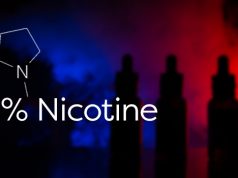A recent study by researchers from the University of Missouri and Yale School of Public Health, found that state restrictions on flavoured vaping products did lead to a decline in vaping among young adults – as intended. However, it also resulted in a rise in traditional cigarette smoking compared to states without such restrictions.
Professor Michael Pesko, an economist at Mizzou, warns that well-intentioned public health policies can have unintended negative effects. Restricting flavoured e-cigarettes pushes users toward more harmful tobacco products, undermining efforts to reduce smoking-related diseases and deaths.
The need for balance
The study also highlighted that an exemption of menthol flavours from a flavour ban in Maryland, resulted in declines in both vaping and smoking rates, suggesting that nuanced regulations may be more effective than outright bans. Pesko emphasizes that policies should encourage shifts toward less harmful alternatives, rather than driving people back to combustible cigarettes.
Another recent study examining on the role of flavoured vapes in smoking cessation, found that using fruity or sweet-flavoured vapes alongside very low nicotine content (VLNC) cigarettes significantly reduced smoking among high-risk adults. Conducted between 2020 and 2023 and consisting of 326 US adult smokers, the study targeted individuals with psychiatric conditions or lower education levels, who are especially susceptible to smoking-related health risks.
Countless studies have reported similar findings, however despite these, sensationalized reports about rising youth nicotine addiction—allegedly driven by flavoured vapes—have fueled growing fears of a teen vaping crisis. This has led to the enforcement of strict regulations and flavour bans, which have repeatedly been shown to be ineffective and counterproductive.
Discussing the matter with smoking cessation expert Dr. Colin Mendelsohn earlier this year, he told Vaping Post that flavours help former smokers gradually dissociate from tobacco. The award winning researcher noted that many smokers initially prefer tobacco-flavoured vapes due to familiarity but often transition to other flavours over time, as they are more enjoyable and reduce associations with smoking.
Dr. Mendelsohn also highlighted that flavour availability is linked to higher smoking cessation rates. He stated that flavours serve as a key incentive for some smokers to switch, hence contribute to higher quit rates, greater satisfaction, and lower relapse risks. To this effect, highlighted Mendelsohn restricting flavours can lead to increased smoking among adults and youth, boost black market sales, and encourage unsafe home mixing. He stressed the need to maintain a reasonable range of flavours while implementing responsible regulations.
Regulting instread of banning
A review of studies and real-world data make it clear that banning vape flavours is not the solution. On the contrary, they are essential in helping smokers switch to less harmful alternatives, and bans risk pushing adults back to cigarettes while fueling an unregulated black market. Instead, targeted measures—such as strict age verification, educational campaigns, and responsible marketing enforcement—would more effectively balance public health priorities. A harm reduction approach ensures that adults seeking to quit smoking maintain access to safer options while protecting youth from vaping’s appeal. This balanced strategy benefits both public health and consumer safety.












